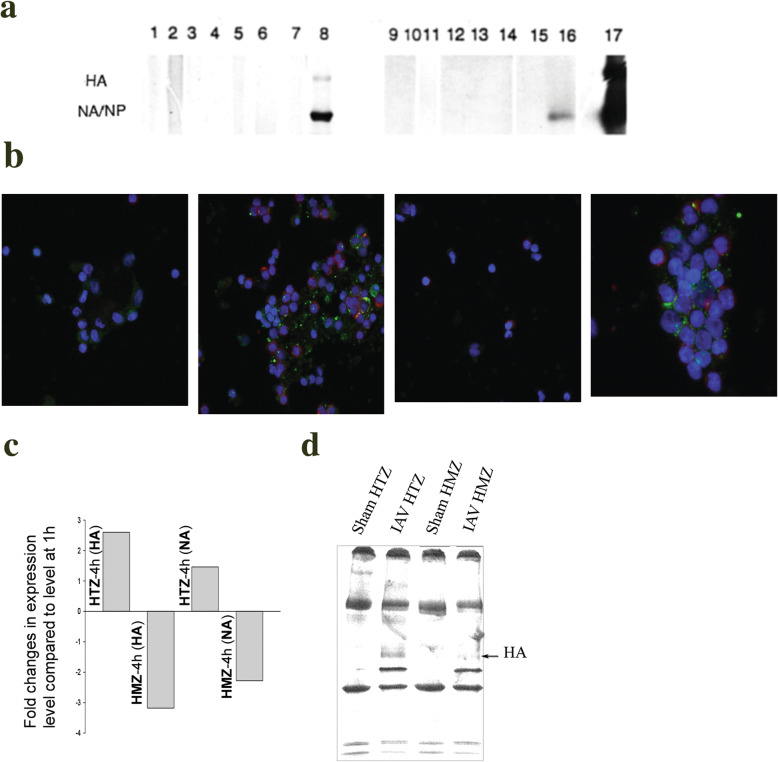Fig. 6.
Influenza Virus (IAV) Proteins Are Synthesized by Virus-exposed Human HLA-A1, HLA-A11, and HLA-B Heterozygous (HTZ) but not Homozygous (HMZ) Lymphocytes. This representative image shows results using cells from HLA-A1-homozygous donor number 6 in part a. a Autoradiograms show representative results of viral protein synthesis using PBMC from an HLA-A1-HMZ donor (lanes 1–8), and results using PBMC from the HLA-A11-HMZ donor (lanes 9–16). After sham-exposure (odd-numbered lanes) or exposure to IAV (even-numbered lanes), purified monocytes/macrophages (lanes 7,8 and 15,16) and lymphocytes (lanes 1–6 and 9–14) were obtained and pulse-labeled and analyzed. Lymphocytes were pulse-labeled 2–4 h (lanes 1, 2 and 9, 10), 4–6 h (lanes 3, 4 and 11, 12), and 6–8 h (lanes 5, 6 and 13, 14) hours after exposure. Cell lysates immunoprecipitated with anti-influenza hemagglutinin (HA), neuraminidase (NA) and nucleoprotein (NP) antibodies are shown. Lane 17 shows positions of standard Mr. proteins. Data are representative of consistent results using cells from the three available HLA-A1-homozygous donors and the single HLA-A11-homozygous donor. b Confocal images of sham-exposed and IAV-FITC-exposed lymphocytes. Fields from left show sham-exposed HLA-A-HTZ/−B-HTZ lymphocytes; IAV-FITC-exposed HLA-A-HTZ/−B-HTZ lymphocytes; sham-exposed HLA-A-HTZ/−B-HMZ lymphocytes; and IAV-FITC-exposed HLA-A-HTZ/−B-HMZ lymphocytes, respectively. c Real time PCR differential fold-change in expression of HA and NA at 4 h post-infection compared to the level at 1 h in lymphocytes of HLA-B-HTZ and HLA-B-HMZ individuals. qPCR values represent mean of two independent experiments using replicate samples (n = 3). 18S rRNA primers were used as internal control for normalization of data. d Analysis of viral HA synthesis by T-lymphocytes from HLA-B-HTZ and -HMZ individuals. Lymphocytes were isolated from infected PBMCs at 4 h post-infection, pulse-labeled for 2 h, and cell lysates were immunoprecipitated with anti-HA antibody and autoradiographed

